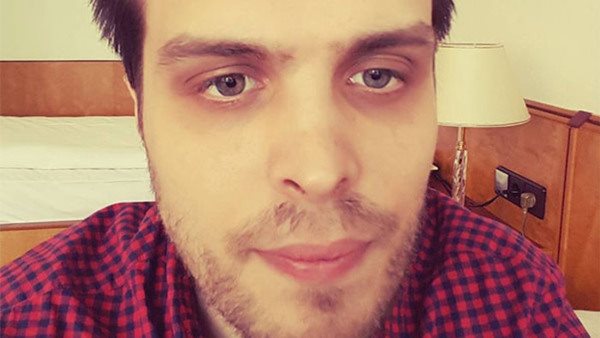
How did you become interested in lutherie?
"I’ve always been interested in music and started out playing the violin at the age of five, trying out my wings on different instruments along the way, finally landing on piano as my main instrument. However, somewhere around the age of 11 or so, I borrowed a Stevie Ray Vaughan vinyl from a relative of mine and instantly wanted to know how to make that sound. I bought my first electric guitar, a “Falcon” Strat, and plugged it into an old home stereo. Surprisingly, it didn’t sound at all like Stevies playing. Even though I never became a guitarist, more and more of my interest fell into the guitar as an instrument."
"I have always been the kind of person that likes to pick things apart to understand how they work and the guitar wasn’t spared from this fate. Through the years I built a couple of guitars in my parents' garage. When I came across the opportunity to study lutherie at Musikinstrumentakademien I jumped on the opportunity."
How have you experienced changes in the business climate for inlay work over time?
"Since I started with inlaying work I have always had a quite steady stream of work coming into my shop, with new customers coming in successively. I think there are still quite a few people that specialize in only inlaying out there, so I haven’t noticed any surges in competition over the years."
What qualities would you say are good to have as a maker of inlays?
"A good quality to have as an inlay maker, would in my opinion be a sensitivity to form and proportionality. Asking yourself questions like 'What works where?', or 'Does this inlay flow nicely across this fretboard?' and similar questions. Sometimes being able to shift perspective in order to deliver what the customer asks for."
"A sense of detail and a fair amount of patience doesn’t hurt either. Most inlay projects I do span over shorter periods of time, a couple of weeks at most. During that time, you really have to focus intensely, especially when doing delicate inlaying and engraving."
How do you reach out with your product/business?
"For me, It has been a word of mouth kind of marketing from the start. I have done some limited marketing efforts with social media and going to guitar shows though, and I have enjoyed it a lot. Mainly I try to give my customers the best products and services that I can, hoping that they will recommend me in the future."
Is there a difference in the view of inlay work today compared to way back in the day - in what way?
"The craft of inlaying has been around a long time. I regard marquetry, metal engraving, and other decorative craft methods to be closely related and I imagine they have always been associated with a high degree of craftsmanship and work pride. The main differences from then, I would imagine lies in the work methods."
"Back in the day, everything was made using hand tools. With modern technology, new methods have been introduced. For instance, much of my inlays are cut using CNC technology. With a whole host of new skills having to be learned, and some old methods perhaps being forgotten in the process. However, I think there will always be a need for a stable ground of knowledge to stand on regardless of the techniques used. You always have to know how the materials will behave, the aesthetic part of the work, and the limitations of new techniques. In many ways I think we all stand on the shoulders of the people that came before us. Remembering how things were made historically, and at the same time breaking new ground I think is the best way of paying our respects to previous craftsmen and women."
What parts of the work process do you find the most fun?
"I generally have the most fun when being on the edge of what I think I can accomplish. Conceptualizing and trying out new techniques to bring my work to the next level. Engraving work is something I really appreciate doing too, it requires full focus for short bursts of time, and watching the image emerge when you rub off the engraving filler is always really rewarding."
